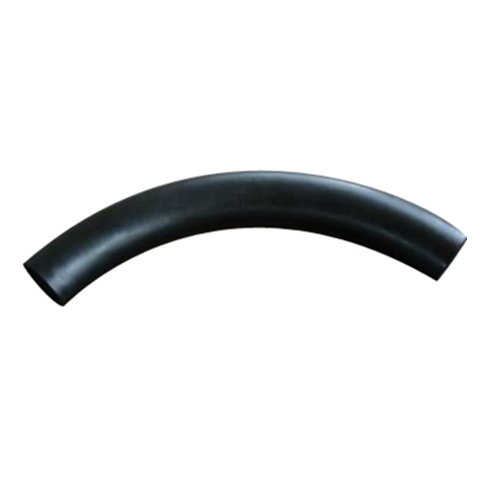-
Cangzhou Yulong Steel Co., Ltd.
-
Phone:
+86 13303177267 -
Email:
admin@ylsteelfittings.com
- English
- Arabic
- Italian
- Spanish
- Portuguese
- German
- kazakh
- Persian
- Greek
- French
- Russian
- Polish
- Thai
- Indonesian
- Vietnamese
- Zulu
- Korean
- Uzbek
- Hindi
- Serbian
- Malay
- Ukrainian
- Gujarati
- Haitian Creole
- hausa
- hawaiian
- Hebrew
- Miao
- Hungarian
- Icelandic
- igbo
- irish
- Japanese
- Javanese
- Kannada
- Khmer
- Rwandese
- Afrikaans
- Albanian
- Amharic
- Armenian
- Azerbaijani
- Basque
- Belarusian
- Bengali
- Bosnian
- Bulgarian
- Catalan
- Cebuano
- China
- China (Taiwan)
- Corsican
- Croatian
- Czech
- Danish
- Esperanto
- Estonian
- Finnish
- Frisian
- Galician
- Georgian
- Kurdish
- Kyrgyz
- Lao
- Latin
- Latvian
- Lithuanian
- Luxembourgish
- Macedonian
- Malgashi
- Malayalam
- Maltese
- Maori
- Marathi
- Mongolian
- Myanmar
- Nepali
- Norwegian
- Norwegian
- Occitan
- Pashto
- Dutch
- Punjabi
- Romanian
- Samoan
- Scottish Gaelic
- Sesotho
- Shona
- Sindhi
- Sinhala
- Slovak
- Slovenian
- Somali
- Sundanese
- Swahili
- Swedish
- Tagalog
- Tajik
- Tamil
- Tatar
- Telugu
- Turkish
- Turkmen
- Urdu
- Uighur
- Welsh
- Bantu
- Yiddish
- Yoruba

Dec . 07, 2024 04:29 Back to list
connecting galvanized pipe
Connecting Galvanized Pipe A Comprehensive Guide
Galvanized pipes are a popular choice for various plumbing and construction applications due to their durability and resistance to corrosion. Made from steel and coated with a layer of zinc, these pipes are often used in water supply lines, drainage systems, and even for structural support in building frameworks. However, connecting galvanized pipes requires careful attention to methods and materials to ensure a secure and leak-free installation. This article will provide an in-depth guide on connecting galvanized pipes, covering types of connections, tools needed, and step-by-step procedures.
Understanding Galvanized Pipes
Galvanized pipes are treated to resist corrosion, which makes them suitable for outdoor and underground installations. Over time, however, the zinc coating can degrade, particularly in areas with high moisture or acidic conditions. Understanding this characteristic is crucial during the connection process, as it impacts the longevity of the joints.
Types of Connections
There are several methods to connect galvanized pipes, each suited to different situations
1. Threaded Connections This is the most common method and is typically used for pipes that are already threaded at their ends. A threaded joint is made by screwing together the two pipes, often with the help of Teflon tape or pipe joint compound for a watertight seal.
2. Couplings When connecting two pipes that do not have threads, couplings can be used. These fittings typically have threads on both ends or can be soldered or welded onto the pipe ends, depending on the specifics of the job.
3. Flanged Connections Flanges are flat pieces of metal that can be attached to the ends of pipes. A flanged connection requires bolts and a gasket to create a sealed joint. This method is preferred when ease of disassembly is needed, such as in maintenance or installation of valves.
4. Compression Fittings These fittings provide a good seal without requiring extensive tools. They consist of a body, a nut, and a ring that compresses against the pipe as the nut is tightened.
Tools Needed
connecting galvanized pipe

To connect galvanized pipes effectively, you will need several tools - Pipe wrenches Essential for gripping and turning the pipes. - Teflon tape or pipe joint compound Used to create a seal in threaded connections. - Hacksaw Useful for cutting pipes to length. - Deburring tool This helps to smooth the edges of cut pipes, preventing sharp edges that can cause leaks. - Safety gear Always wear gloves and safety glasses while working with pipes.
Step-by-Step Connection Process
1. Measure and Cut Start by measuring the lengths of pipe needed for your installation. Use a hacksaw to cut the pipes, ensuring your cuts are straight.
2. Deburr the Edges After cutting, use a deburring tool to remove any sharp edges. This step is crucial as it prevents damage to seals and causes leaks.
3. Prepare the Threads If using threaded connections, wrap the threads of the pipe with Teflon tape or apply pipe joint compound. This will help ensure a watertight seal when connecting the pipes.
4. Connect the Pipes If you’re using a threaded connection, simply screw the pipes together, ensuring they are snug but not overly tight to avoid damaging the threads. For couplings or flanged connections, follow the manufacturer's instructions for installation.
5. Check for Leaks Once everything is connected, turn on the water supply and check for leaks. If you notice any, tighten the connections slightly or reapply Teflon tape as necessary.
6. Final Inspections Ensure that all joints are secure and that there are no visible signs of corrosion or wear on the pipes. Regular maintenance checks can prolong the life of your galvanized piping system.
Conclusion
Connecting galvanized pipes requires careful planning and execution to ensure a reliable plumbing system. With the right tools and techniques, virtually anyone can tackle this task. Whether for a DIY home project or a professional installation, understanding the various methods for connecting galvanized pipes ensures a job well done and a system that will serve effectively for years. Regular inspections and maintenance are essential, so always keep an eye on your pipes to address potential issues early.
Latest news
-
ANSI 150P SS304 SO FLANGE
NewsFeb.14,2025
-
ASTM A333GR6 STEEL PIPE
NewsJan.20,2025
-
ANSI B16.5 WELDING NECK FLANGE
NewsJan.15,2026
-
ANSI B16.5 SLIP-ON FLANGE
NewsApr.19,2024
-
SABS 1123 FLANGE
NewsJan.15,2025
-
DIN86044 PLATE FLANGE
NewsApr.19,2024
-
DIN2527 BLIND FLANGE
NewsApr.12,2024
-
JIS B2311 Butt-Welding Fittings LR/SR 45°/90° /180°Seamless/Weld
NewsApr.23,2024











